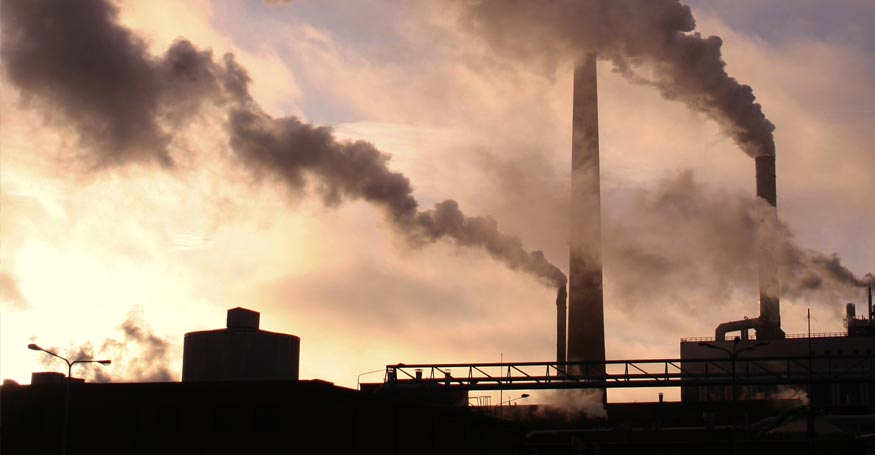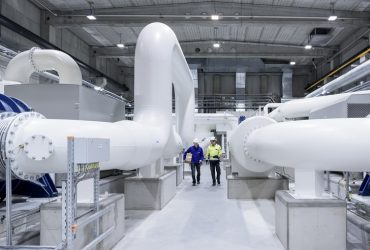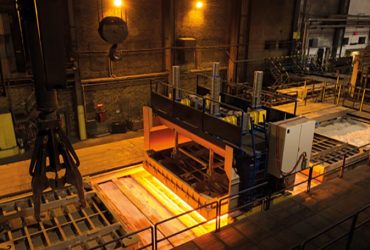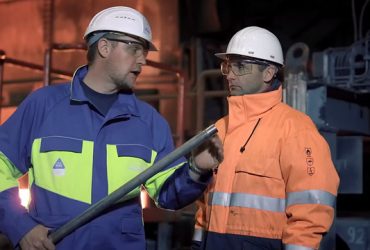
NOx – measuring, interpreting and taking action. The steps towards optimising conditions in your process
In many process industries today, regular emissions measurements have become routine. What is less clear, however, is how the results are to be measured, interpreted and assessed. To find out which measures produce results and which techniques work best for a specific process, you have to understand the factors that affect NOx values. AGA metallurgists Fredrik Nyman and Fredrik Stark explain how it all fits together, and offer advice on how to achieve a highly productive, energy-efficient process.
In the steel industry, Thermal NOx accounts for the bulk of NOx emissions. These are formed when oxygen and nitrogen interact at high temperatures – from 1,200 to 1,300°C – growing exponentially thereafter. They are formed in heating furnaces, among other places.
Pinpointing problems withproblems with NOx measurement
From an investment perspective, small problems can quickly snowball into a costly headache. The measurement of NOx emiss-ions makes it possible to localise and address issues, avoiding the need for costly, unnecessary intervention. For instance, effective NOx measurement provides a good indication of whether a furnace is functioning as intended. You can quickly and easily determine whether or not the furnace is airtight or if the pressure is incorrect, which can have a major impact on energy costs.
”We focus a great deal on helping our customers analyse any excess oxygen which leads to the formation of NOx, enabling them to pinpoint whether this results from air leakage or an incorrectly install-ed burner,” explains Fredrik Stark, Application Engineer at AGA.
No global measurement standard
NOx measurement involves gauging the concentration of nitrogen oxide, oxygen and carbon dioxide in emissions. As far as this is concerned, there is no doubt. What is important, however, and the subject of some disagreement, is how to calculate and present the results. ”There is currently no global standard for the analysis and reporting of the results, and you only need to look at Sweden and Finland to see that measurement data is analysed and interpreted differently. The EU is in the process of discussing the standard for reporting NOx emissions, but for now, a range of methods are applied,” explains Fredrik Nyman, Application Engineer at AGA.

Fredrik Nyman and Fredrik Stark are application engineers at AGA, focusing on process development and energy efficiency.
Important to understand the factors involved
One example of a common method for reporting results from heating and heat treatment furnaces at present is based on gauging the volume of NOx per volume of energy (expressed as mg NO2/MJ). This is standard practice in Sweden. Another approach is to present the data as a concentration (expressed as mg NO2/Nm3 exhaust gas converted to 3% O2), which is standard in Finland.
“Reporting as a concentration is only correct if air is the oxidant. However, to compare different techniques, this can easily be re-calculated, for example, if oxygen is added to the air or used as an oxidant. However, this means the level of carbon dioxide must be measured at the same time, and the fuel known,” Nyman explains. To interpret the results accurately, it is necessary to understand the difference between the various methods of reporting. Understanding the factors behind formation of NOx and taking different conditions into account is also important – the results themselves are not the be all and end all. “Making combustion oxygen-efficient and cutting energy consumption reduces the volume of exhaust gases in the combustion process. However, despite a fall in actual emissions, the concentration of NOx can actually increase,” says Stark.
“With this in mind, we want to underline the importance of understanding your specific process, as well as how the results are to be measured and reported. This will make it easier to select the appropriate measures in order to reduce emissions, whether addressing problem areas or installing technology to reduce NOx,” adds Nyman.
Steps for avoiding NOx
As NOx occurs naturally in conjunction with all types of combustion, it is impossible to achieve zero emissions. The challenge is to keep emissions to a minimum while maintaining fuel efficiency. There are various techniques used to purify NOx, but the most effective method is to prevent formation to the greatest extent possible by using the right combustion technique and performing regular process checks. “AGA has developed oxygen solutions that have proven extremely effective, helping our customers to dramatically reduce NOx emissions,” says Stark.
Active preventive maintenance
A key factor that should not be overlooked is the maintenance of furnaces. In this context, elevated levels of NOx often indicate that something is wrong, and that there is room to improve the process. A high level of NOx is often caused by air leakage or issues concerning the interaction between the fuel and oxidant.
“All it takes is damage to the incinerator door, a faulty pressure gauge or a jammed gate valve to allow large volumes of air to leak into the chamber. This results in the formation of NOx, as well as an increase in fuel consumption. There are cases in which damage to the gate valve of a furnace led to a fourfold increase in NOx emissions (75 mg/MJ to >300mg/MJ) and a rise in energy consumption of more than 15 per cent,” explains Nyman. The measures adopted to reduce emissions are therefore not just about complying with regulatory requirements, but ensuring an energy-efficient, highly productive process at an even temperature. “Regular process measurements and active preventive maintenance of doors, gate valves and combustion systems are fundamental in order to maintain low NOx emissions, so issues can be detected and addressed in good time,” adds Stark.
By: Cecilia Rudengren
Photo: Cecilia Rudengren, Shutterstock



